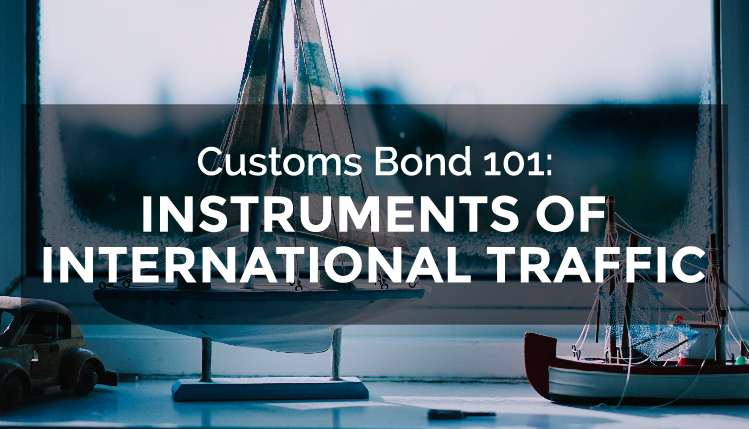The Instruments of International Traffic Bond is one of the many Customs bonds available to importers. Although it’s a common part of the importing community, this bond appeals to a very specific demographic.
An Instruments of International Traffic Bond is used by any shipping company that handles and transports imported commodities in America. The post below will detail how this bond is utilized and help you decide if you need to have one on file.
What is the Bond Needed for Instruments of International Traffic
The purpose of this bond is to allow specific tools (those needed to move goods) into the U.S., without having to file an entry or pay duties. This allows importers to more effectively and efficiently use their containers and various other implements without having to pay duties or file entries upon each visit to the U.S. Or in the event that the tools are products of the U.S., to be allowed back in the country without paying duties or filing entries. Instruments of International Traffic bonds are only continuous, and the minimum size is $20,000.
How This Bond Works
Under this bond the principal agrees to comply with Customs regulations and pay any accrued fees when using instruments of international traffic to move imported goods in the U.S. Some examples of instruments of international traffic are: lift vans, cargo vans, shipping tanks, various containers, skids, pallets, and caul boards.
The Specifics of Instruments of International Traffic
The bonded business must report when an instrument has been taken out of the U.S and pay any duties if applicable. If a business gets free release of a container that is serially numbered as 9801.00.10 or 9803.00.50 then the business agrees not to advance the value of its condition while abroad, pay the initial duty due, mark the container in a way established by Customs, keep records that show current status of container, and remove markings when taken out of service. The business must keep and maintain all records when establishing a cross-border program. They must file all pertinent paperwork and pay any duties if applicable. Liquidated damages will be assessed at an amount equal to the value of the goods. If goods were not involved then the fee will be $1,000 for each violation.
This has been a brief overview of how the Instruments of International Traffic Bond works and which parties generally use one. Consider evaluating your own company’s needs and decide if you could benefit from this bond.







![[Webinar] How Could Changes to De Minimis Impact Your Company?](https://traderiskguaranty.com/trgpeak/wp-content/uploads/2025/05/trg-how-de-minimis-impacts-customs-bond-webinar-400x250.png)